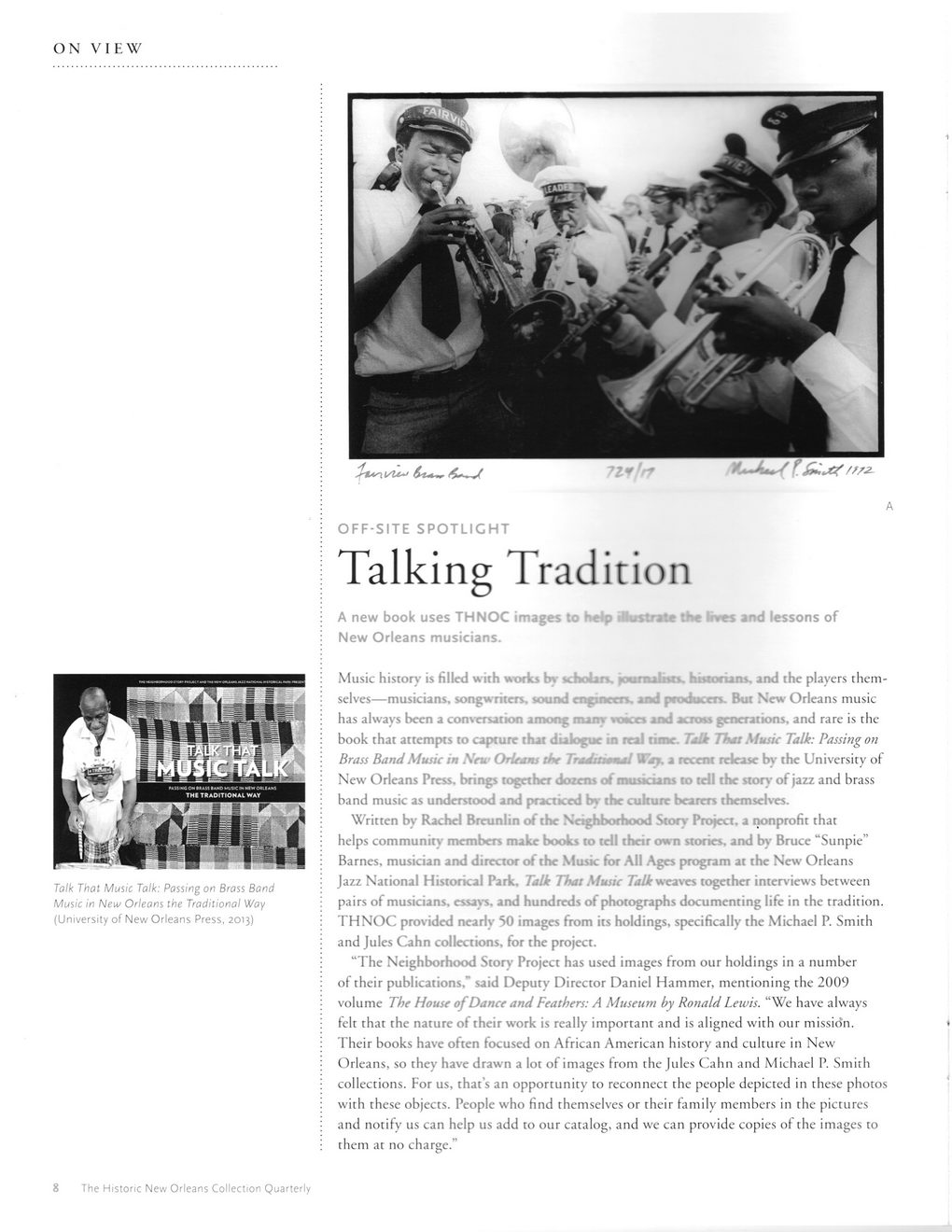This text was obtained via automated optical character recognition.
It has not been edited and may therefore contain several errors.
ON VIEW Talk That Music Talk: Passing on Brass Band Music in New Orleans the Traditional Way (University of New Orleans Press, 2013) ^ 7Vf 'rr i&Jtfrrz- A OFF-SITE SPOTLIGHT Talking Tradition A new book uses THNOC images he4p ■fena-st'* the Inrt and lessons of New Orleans musicians. Music history is filled with works by scholar*. [nc^ulno. hnaorians. and the players themselves—musicians, songwriters, sound capncm. and producers. But New Orleans music has always been a conversation among many voces and across generations, and rare is the book that attempts to capture that dialogue in real time. TsBt That Music Talk: Passing on Brass Band Music in New Ortons the Trmdammml flfrp. a recent release by the University of New Orleans Press, brings together dozens of musicians to tell the story of jazz and brass band music as understood and practiced by the culture bearers themselves. Written by Rachel Breunlin of the Neighborhood Story Prefect, a nonprofit that helps community members make books to tell their own stories, and by Bruce “Sunpie” Barnes, musician and director of the Music for All Ages program at the New Orleans Jazz National Historical Park. Talk That Music Talk weaves together interviews between pairs of musicians, essays, and hundreds of photographs documenting life in the tradition. THNOC provided nearly 50 images from its holdings, specifically the Michael P. Smith and Jules Cahn collections, for the project. “The Neighborhood Story Project has used images from our holdings in a number of their publications,” said Deputy Director Daniel Hammer, mentioning the 2009 volume The House of Dance and Feathers: A Museum by Ronald Lewis. “We have always felt that the nature of their work is really important and is aligned with our mission. • Their books have often focused on African American history and culture in New Orleans, so they have drawn a lot of images from the Jules Cahn and Michael P. Smith collections. For us, that’s an opportunity to reconnect the people depicted in these photos 4 with these objects. People who find themselves or their family members in the pictures and notify us can help us add to our catalog, and we can provide copies of the images to them at no charge.” 8 The Historic New Orleans Collection Quarterly

New Orleans Quarterly 2015 Spring (11)